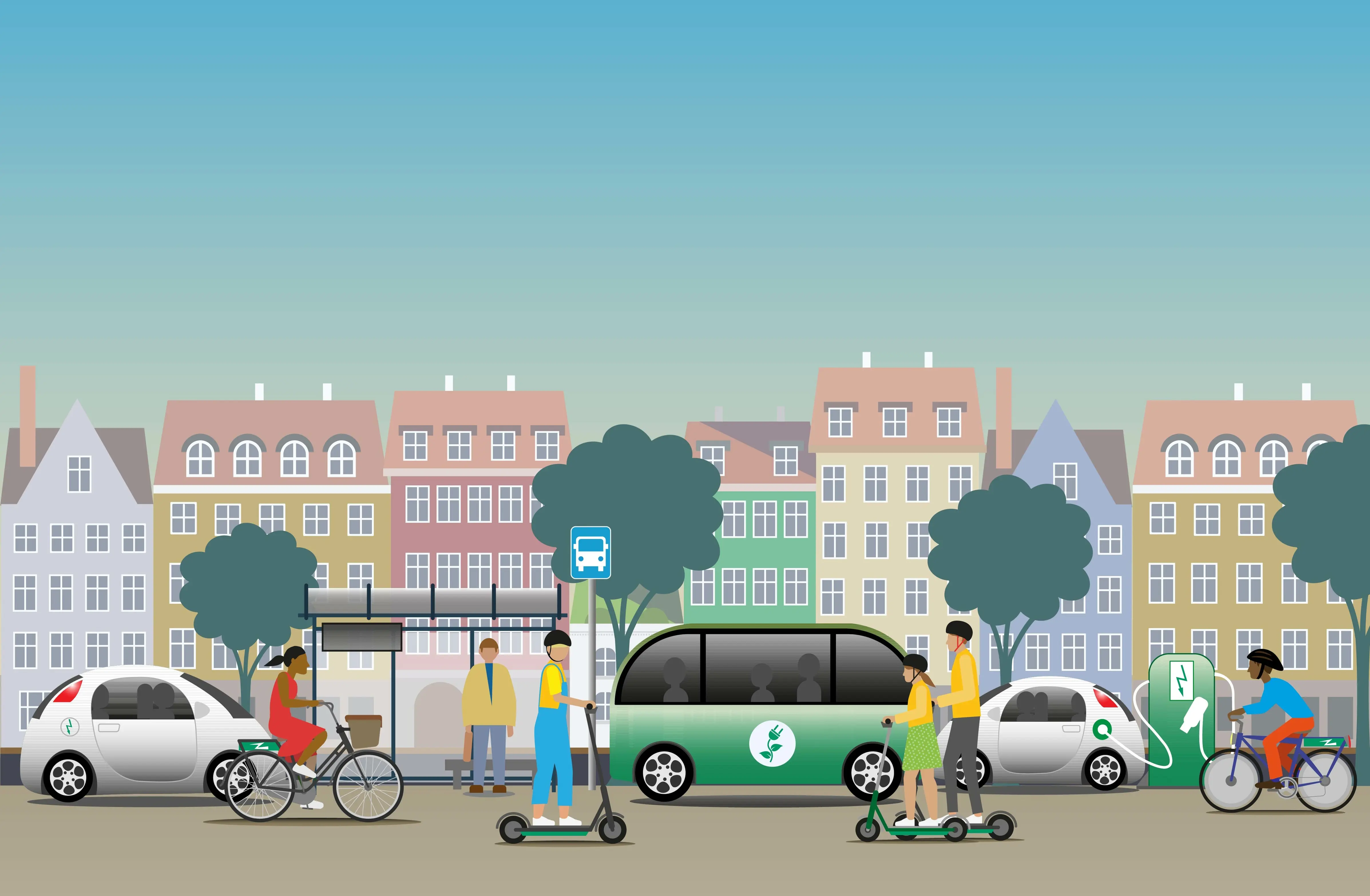Several modes of transport instead of just your private car: what potential does active mobility offer in Switzerland?
Many journeys completed by private car could be replaced by active forms of mobility, often in combination with sharing services and public transport. The ActiveAll project, headed up by ZHAW mobility researcher Andrea Del Duce, is therefore aiming to demonstrate the potential for expanding micro and active mobility in Switzerland. The project is part of the “Enabling an efficient transport system” funding programme of the Swiss Federal Office of Energy (SFOE).
It's hard to imagine anything more convenient than quickly and easily jumping into your own car and heading on your way. In many cases, however, this is far from environmentally sustainable. After all, some journeys can be completed just as well using more environmentally friendly solutions. “In rural areas, in particular, I can reach my destination faster and more conveniently by car than would be possible when using public transport, which often entails first waiting for a bus before changing at the train station and catching a train,” says project manager Andrea Del Duce in describing the current situation for many journeys in peripheral regions. “For us, it is about finding out how active and lightweight electric mobility options can be better integrated into our transport system so that our everyday mobility becomes both convenient and environmentally sustainable. The key here lies in combining private, shared, collective, lightly motorised and active modes of transport, including when undertaking so-called intermodal journeys, which involve utilising more than one of these modes of transport in completing a single journey,” explains Del Duce, who is researching sustainable mobility forms as part of the Sustainable Supply Chain Management and Mobility research group led by Christof Knöri at the ZHAW Institute of Sustainable Development (INE).
Important mobility partners on board
Alongside the INE, the project consortium also includes the Touring Club Switzerland (TCS), Mobilitätsakademie AG and the Swiss Alliance for Collaborative Mobility (CHACOMO). “Together, we want to find answers to two main questions: what potential does active and micro mobility offer in the area of Swiss mobility in terms of reducing private car use? And then how can we realise this potential?”
To this end, the researchers want to identify the barriers faced not only by mobility users, but also by transport providers. “The aim is to conduct a large survey, in particular among car users, in order to find out what it would take for them to switch to active, lighter and shared forms of mobility,” says Andrea Del Duce in explaining one of the project's objectives.
Analysis of 70,000 car journeys
The project team is also examining data from the Swiss Mobility and Transport Microcensus on approximately 70,000 car journeys, including information on the starting points and final destinations of the trips as well as the time at which they were completed and their purpose. “Using Google APIs, we will automatically calculate how long the journey would have taken if it had been completed using active forms of mobility or on an intermodal basis instead of by car,” says Del Duce. The researchers want to find out which private car journeys could be replaced by alternative and more sustainable solutions of a similar length. “It goes without saying that if alternative options take twice as long as would be the case with a private car, people aren’t going to accept them. However, if we see, for example, that 30 percent of private car journeys could be completed in a similar amount of time using other modes of transport, this would demonstrate that a relevant reduction in CO2 emissions could potentially be achieved,” says the mobility researcher in citing one of the project’s potential outcomes.
Contribution to new mobility concepts
By highlighting the potential offered by active, shared and intermodal journeys, the researchers hope to contribute to the creation of new mobility concepts or the establishment of mobility alliances among municipalities and transport providers upon the conclusion of the three-year project. “The project results could be used to illustrate to municipalities that new mobility concepts can help them to save space, reduce private car traffic and contribute to more sustainable transport development,” explains Del Duce. This would demonstrate to politicians how new mobility concepts can be better integrated into the transport system. “However, specific recommendations for actions will only emerge from our data collections and results,” says Andrea Del Duce, emphasising that it remains difficult to make concrete recommendations, “as we still don’t know where our journey will take us.”
